#FASHION REVOLUTION
Explore tagged Tumblr posts
Text





𝐃𝐢𝐬𝐜𝐨𝐯𝐞𝐫 𝐭𝐡𝐞 𝐅𝐮𝐭𝐮𝐫𝐞 𝐨𝐟 𝐅𝐚𝐬𝐡𝐢𝐨𝐧 𝐰𝐢𝐭𝐡 𝐆𝐞𝐧𝐝𝐞𝐫 𝐅𝐥𝐮𝐢𝐝 𝐒𝐭𝐲𝐥𝐞𝐬!
Gender fluid fashion is redefining style by breaking traditional norms. Explore how this trend embraces versatility, inclusivity, and creativity in the fashion world. From androgynous looks to bold statements, gender fluid fashion offers limitless possibilities for self-expression. Learn how to incorporate these cutting-edge styles into your wardrobe today!
#gender fluid fashion#inclusive fashion#fashion trends#style inspiration#fashion revolution#non binary fashion#androgynous style#unisex fashion#fashion for all#modern fashion
7 notes
·
View notes
Text
Trois grains de riz
Il était une fois trois grains de riz. Dans un bol, tout au fond, c’est tout ce qui lui reste. Pour lui, sa femme, son bébé, et rien d’autre pour se nourrir. Rien d’autre pour vivre. Sur la ferraille, leur lit, sa femme dort. Elle essaie. À côté, le voisin n’en finit plus de crier. Colère et indignation. Lui aussi vient de se faire licencier. Leur faute à tous les deux ? Dans la rue, leur révolte portée à nue. Ils sont descendus, ensemble, avec leurs camarades, avec les autres ouvriers de l’usine, pour demander un salaire plus équitable, un salaire plus humain. Justice et dignité, voilà ce qu’ils désirent. Nobles revendications estimaient-ils. Pour leur patron, ce fut la porte. Prix à payer de celui qui ne sait pas rester à sa place. Mais comment faire à présent ? Comment faire sans argent, sans ressources, seul avec ces trois grains de riz ? Minuscules et ridicules semences perdues au fond d’un bol, ébréché lui aussi. Les contes nous racontent que quelques graines extraordinaires savent déjouer les pièges des géants, quand la vie leur répond qu’il n’est pas bon de croire à toutes ces fantaisies. Lui n’y croit déjà plus, mais le sourire de son enfant, cette magie -là, il peut encore la voir. Dans la nuit, dans le noir, après le chaos du jour, sur les lèvres du bébé, des rêves paisibles s’annoncent, protègent encore un peu l’innocence de celui qui, son père l’espère, ne connaîtra pas une telle misère.
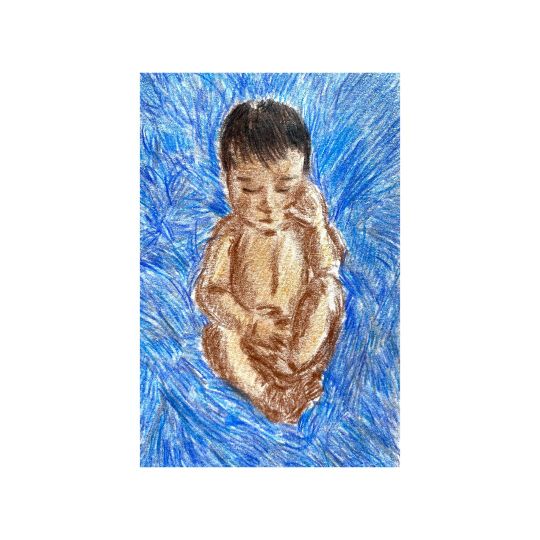
Texte inspiré de la révolte au Bangladesh des ouvriers du textile pour un salaire digne.
Articles de référence : https://www.google.com/url?q=https://fr.fashionnetwork.com/news/Au-bangladesh-le-combat-des-ouvriers-du-textile-pour-un-salaire-digne,1589119.html?nl%3D259341%26uc%3D3963081&sa=D&source=docs&ust=1708416516318329&usg=AOvVaw2BPKuqbchzRd0-96ljVeLh
#my post#art#my art#illustration#ethics#illustrator#fashion revolution#mode#fashion#artist#artwork#artists on tumblr#digital art#art tag#artist on tumblr#drawing#tumblr draw#drawings#my text#my writing#my draws#my artwork#life lessons#life#illustragram#illustrative art
5 notes
·
View notes
Text
Over 100 brands have been linked to Amazon deforestation through their use of leather.

Sources:
Fashion Transparency Index 2023
Nowhere to Hide: How the Fashion Industry Is Linked to Amazon Rainforest Destruction
3 notes
·
View notes
Text
Brand Agnostic: The Fashion Revolution Erasing Gender Labels
The fashion industry is undergoing a radical shift as a wave of brand-agnostic labels reject the traditional division between "male" and "female" clothing. These progressive brands are designing for people, not genders, creating fluid collections that celebrate individuality beyond binary norms.
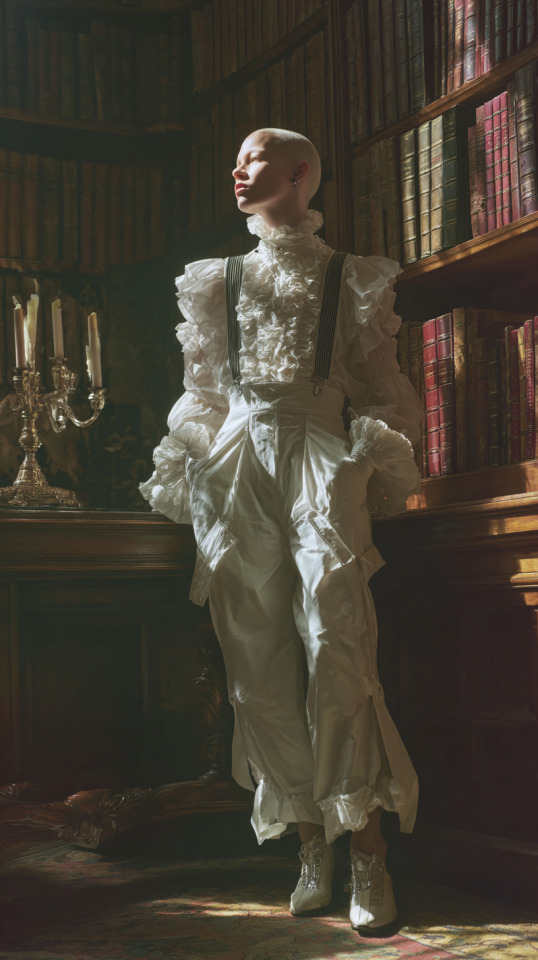
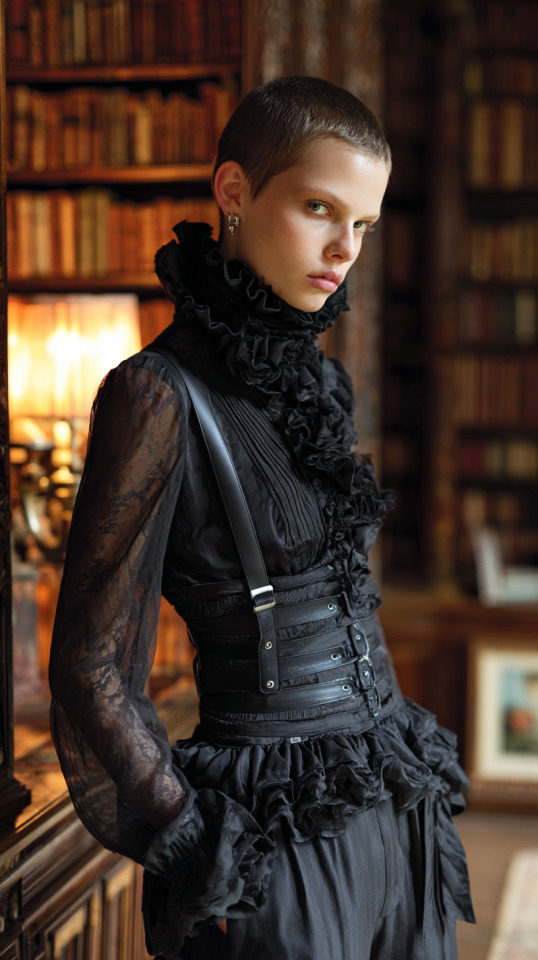
What Is Brand-Agnostic Fashion?
✔ No "Men's" or "Women's" Sections – Just one unified collection. ✔ Size-Inclusive Designs – Garments adapt to diverse body types. ✔ Neutral Styling – Silhouettes balance structure and flow (e.g., tailored blazers with draped skirts). ✔ Marketing Without Genders – Campaigns feature models of all identities.
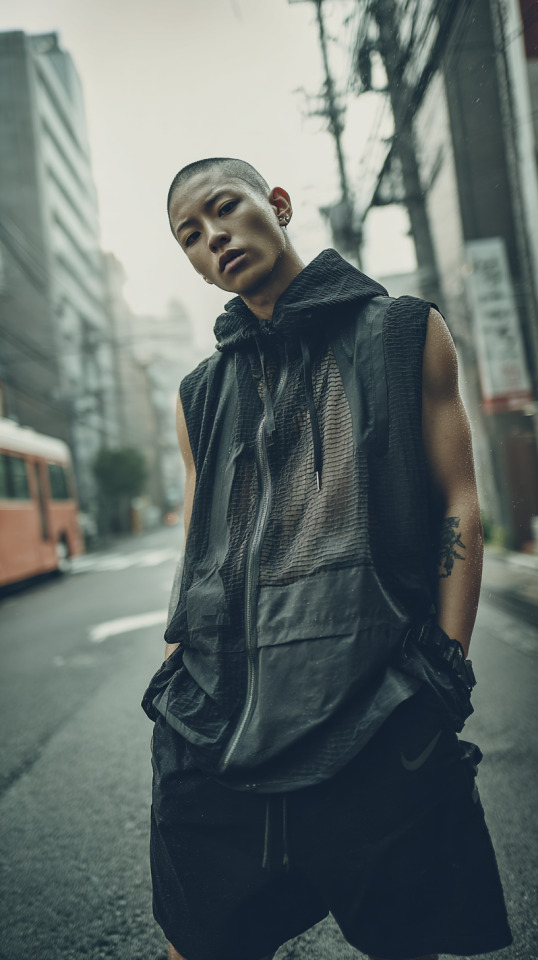
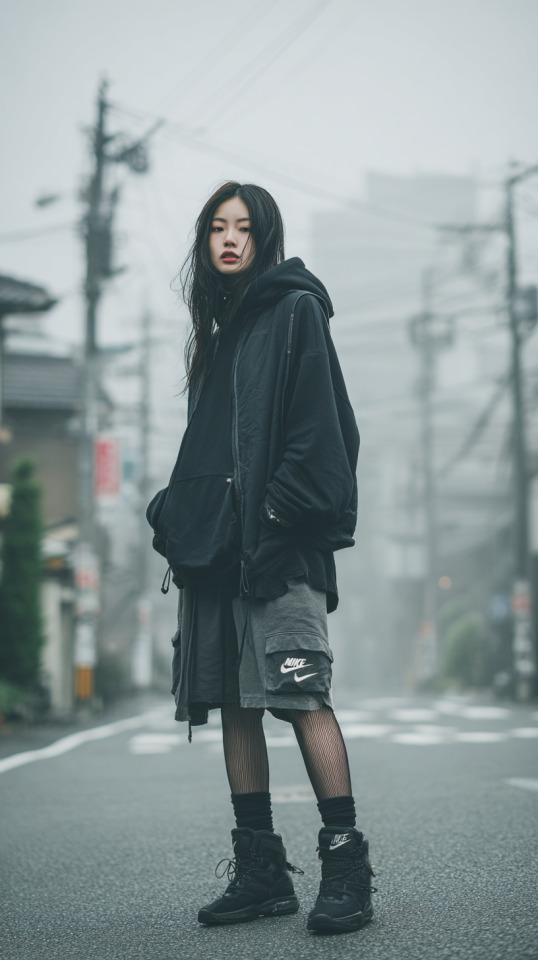
Pioneering Brands Leading the Change
Telfar – Their iconic Shopping Bag is loved by all, slogan: "Not for you—for everyone."
One DNA – Minimalist basics with adjustable fits (buttons, ties, or stretch fabrics).
Bode – Vintage-inspired pieces that defy gendered nostalgia.

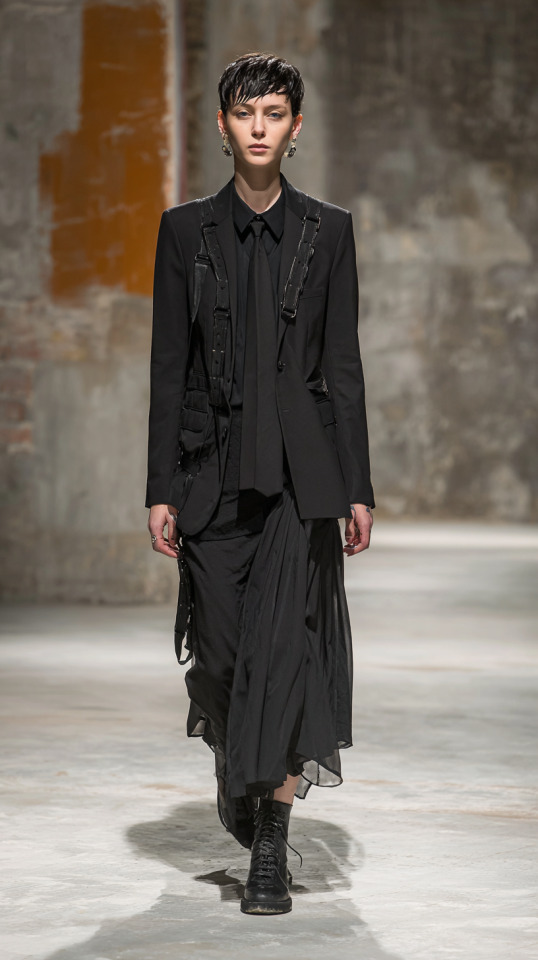
Why This Movement Matters
Gen Z Demand – 56% of Gen Z consumers prefer gender-neutral fashion (Vogue Business).
Sustainability – Fewer segregated collections mean less overproduction.
Cultural Shift – Reflects growing recognition of non-binary and trans identities.
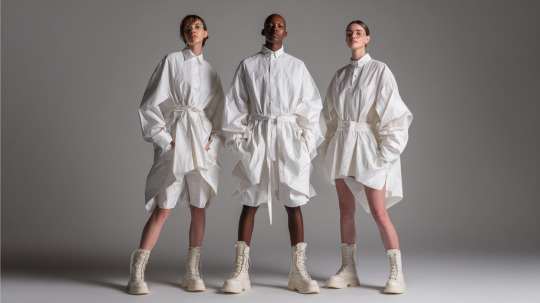
How to Wear Brand-Agnostic Style
Focus on Fit – Try oversized shirts as dresses or trousers as statement culottes.
Play with Proportions – Pair a boxy suit with a lace camisole.
Ignore the "Rules" – Heels, skirts, and makeup aren’t gendered—they’re tools.
#Brand Agnostic#Genderless Fashion#NonBinary Style#Fashion Revolution#Unisex Clothing#WearWhatYouWant#BeyondBinary#Queer Fashion#Sustainable Style#Gen Z Fashion#Telfar Core#Inclusive Design#NoMoreGenders#Fashion Freedom
0 notes
Text
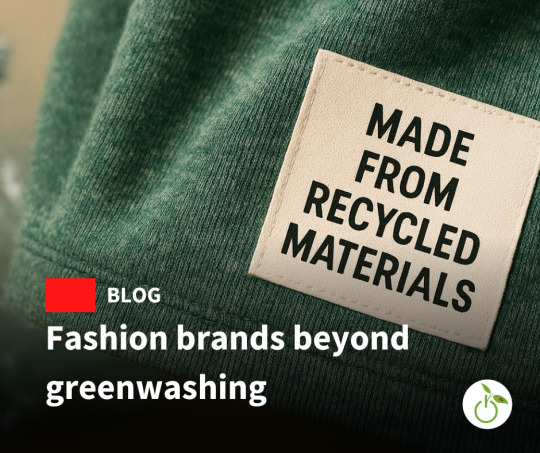
WHO REALLY DRESSES SUSTAINABLY
Journey through fashion brands that turn bottles, fishing nets, and textile waste into stylish modern clothing
@gw-360
#made from recycled material#sustainable fashion#ethical fashion#green fashion#no planet b#conscious style#fashion revolution#eco fashion brand#moda sostenibile#moda etica#abbigliamento sostenibile#brand green#moda responsabile#materiali riciclati#moda consapevole#ecoalf#gw360#greenwhereabouts#greenwhereabouts360#gw360blog
0 notes
Text

🌿✨ Fashion meets sustainability with every piece we create! Join me, Valentina Fradegrada, in embracing eco-friendly styles that don’t compromise on beauty.
#Valentina Fradegrada#Eco Friendly Fashion#Sustainable Living#Green Fashion#Conscious Consumer#Fashion Revolution#Eco Chic#Sustainable Style#Love Your Planet#Ethical Fashion
0 notes
Text
Enorsia: Your New Favorite Sustainable Aesthetic (Spoiler: It’s Not Just for Tree Huggers)

Intro: Let’s Talk Fast Fashion (But Make It Cringe) Raise your hand if you’ve ever bought a £5 shirt that disintegrated after two washes 🙋♀️. We’ve all been there. Fast fashion is like that toxic ex—cheap thrills, messy consequences. But what if your wardrobe could actually slay and save the planet? Meet Enorsia, the UK-based indie brand that’s here to make sustainability look damn good.
Founded in 2022, Enorsia is the lovechild of eco-consciousness and ~vibes~. Think oversized denim jackets that outlive your relationships, dungarees that scream cottagecore, and workwear that doesn’t cost the Earth (literally). Let’s dive in.
1. The Enorsia Aesthetic: For When You Want to Look Chill and Change the World
Enorsia’s collections are basically a mood board for your closet:
Workwear: Blazers that say, “I’m a CEO who composts.”
Smart Casual: Linen trousers perfect for picnics or passive-aggressive emails.
Outing Essentials: Jackets that survive both rainstorms and existential crises.
Everyday Staples: Tees so soft, they’ll make you forget fast fashion exists.
Hot Take: Their Men’s Oversized White Denim Jacket is the ultimate gender-neutral layering piece. Pair it with docs, florals, or your tears over climate change.
2. Sustainability? More Like SLAYSTAINABILITY 🌍
Enorsia doesn’t just talk the talk—they walk the walk (in ethically made shoes, obvs):
Materials: Organic cotton that uses 91% less water than regular cotton (Textile Exchange).
Zero Waste: 98% of fabric scraps become headbands, scrunchies, or art.
Carbon-Neutral AF: Even their shipping is guilt-free.
Pro Tip: Scan the QR code on your Enorsia tag to see your garment’s origin story. It’s like Black Mirror, but wholesome.
3. The People Have Spoken (And Enorsia Actually Listens)
This isn’t a brand that hides behind DMs. They’re out here:
Letting followers vote on new designs via Insta polls (@enorsia_uk).
Expanding sizes because all bodies deserve sustainable drip.
Posting TikTok vids of their factory (spoiler: no sad music, just happy workers).
Vibe Check: Their Women’s Short Dungarees are the summer flex. Pair with sunburn and a reusable straw.
4. Enorsia’s 2024–2026 Glow-Up Plan (We Stan)
2024: Opening a London store with free mending workshops (because even sustainable queens get holes in their socks).
2025: Conquering Europe with solar-powered German hubs.
2026: Launching a non-profit to teach textile upcycling. Basically, they’re the Avengers of fashion.
Why You Should Care (And Let’s Be Real, You Already Do)
For the ‘Gram: Enorsia’s pieces are made for flat lays and #OOTD posts.
For the Planet: Every purchase = 1 less landfill-bound polyester disaster.
For Your Soul: Supporting small biz >>> feeding Bezos’ space habit.
TL;DR: Enorsia is the brand you tag in your “sustainable living” Pinterest board. Shop their fits, save the planet, and look hot doing it.
Ready to Join the Cult (of Sustainability)?
Shop: enorsia.com
Follow: TikTok | Instagram
Reblog This Post: Spread the word (and the aesthetic).
#sustainable fashion#ethical brands#slow fashion#enorsia#ecowarrior#cottagecore#thriftflip#climate action#fashion revolution
0 notes
Text
Hold Your Breath, People! The Ugliest Shoes in the World Are Back in Style!
Controversial platform boots from 2010 are making a comeback just in time for fall, and fashionistas are eagerly awaiting the revival of “Tumblr summer,” in tribute to the once-popular blog known for its quirky posts. Jeffrey Campbell’s infamous Lita boots are back, and they’re not going unnoticed. Just weeks after their re-release, 430 pairs of the $195 boots have already been sold, with many…
#2010s Style#Bold Style#DIY Fashion#Edgy Footwear#FASHION#Fashion Comeback#Fashion Revolution#Fashionista#Footwear Trends#Jeffrey Campbell#Lita Boots#Nostalgia Fashion#shoes trend 2024#stay trendy#Street Style#Tumblr Summer#Ugly Shoes#Unconventional Fashion
0 notes
Text
Global Circular Fashion: Embracing Fashion Globally to Create a Sustainable Fashion Future

The Rise of Fast Fashion and its Circular Fashion Over the past few decades, the rise of fast fashion has transformed the global apparel industry. Where consumers once upgraded their wardrobes a few times a year through planned purchases, they now shop more frequently, with trends changing at an ever more rapid pace. Major clothing brands now release new collections every two weeks and low prices enable frequent purchases. However, this business model has come at a huge environmental cost. The United Nation estimates that the fashion industry generates 10% of global carbon emissions annually and consumes more energy than the aviation and shipping industries combined. With increasing production volumes tied to falling garment lifespans, vast amounts of textile waste is dumped in landfills every year instead of being recycled or reused. If trends continue, the fashion industry's environmental footprint will expand significantly.
The Need for Circular Systems To create a more sustainable future, it is Global Circular Fashion away from the linear "take-make-dispose" model to a circular economy approach. Circular systems aim to design out waste and pollution, keep products and materials in use, and regenerate natural systems. For fashion, this means rethinking the entire lifecycle of garments - from design and material sourcing to production, distribution, consumption, and end of use. The goal is to transition from a disposal-oriented system to one that retains value, reuses resources, and minimizes environmental impacts. Some circular strategies that brands and policymakers are exploring include extending garment lifetime through durability and repairability, using recycled and biodegradable materials, implementing take-back and resale programs, and investing in closed-loop recycling technologies.
Corporate Leadership and Innovation Leading brands have already begun embracing circular principles to varying degrees. Swedish retailer H&M launched a garment collection program in 2013 allowing customers to drop off old clothes in stores. So far it has collected over 35,000 tons globally that are sorted and recycled or reused. Meanwhile, fashion company Ecouterre designs digitally printed collections with minimal waste using plant-based dyes and biodegradable fabrics. Outdoor brand Patagonia runs “Worn Wear,” a program promoting product repair to extend lifespan. It recently began trials for a closed-loop recycling facility in Europe. On the materials front, companies like Adidas and Reebok have launched shoe collections incorporating post-consumer recycled plastics and other sustainably sourced inputs. From design to end-of-use, these examples demonstrate feasible innovations that can scale with broader corporate adoption.
Policy Push and Regional Actions Market forces alone may not be enough to drive the systemic change required for circular transition globally. Coordinated policy push and regional cooperation are also needed. The Extended Producer Responsibility (EPR) concept extends a producer's responsibility for its product to the post-consumer stage of the product's lifecycle. Laws making brands financially and physically responsible for collecting and recycling textiles will incentivize design for durability and recyclability. The European Union recently unveiled plans for a more robust circular economy via its European Green Deal policy package. It aims to cut down on textile waste and establish EPR schemes across member states by 2025. Meanwhile, the UK has issued reforms to boost clothing resale and encourage design for longer use-phases. On a city level, Amsterdam and Paris are piloting fashion collection bins linked to brands' takeback programs to improve recycling rates. Combined top-down policy nudges and bottom-up innovations could help deliver on the promise of circular fashion globally.
Challenges of Adoption in Developing Markets While circular initiatives are gaining steam in developed markets, their adoption faces considerable challenges in emerging economies that are big fashion consumers and producers. Commercial RESALES programs are yet to meaningfully take off in regions like Southeast Asia due to low standards for used clothing and resale platforms. Collection and sorting infrastructure also remains underdeveloped compared to brand-run programs in the West. Local recyclers lack access to recycling technologies and face supply chain barriers. Affordability further affects consumers' ability to pay premiums for sustainable options or access garment rental/repair services popular in wealthier nations. Overcoming these socioeconomic obstacles will require hybrid business models tailored for lower-income demographics together with public investments in waste management infrastructure. Cooperation between international brands, domestic manufacturers, and regional stakeholders can help accelerate the circular transition process in developing economies.
Need for Multilateral Action and Public Engagement As fashion globalizes, the shift towards circularity similarly demands coordinated action worldwide. Issues like plastic pellet pollution, carbon leakage across supply chains, and global trade in textile waste underline the need for binding multilateral agreements. The UN Sustainable Development Goals provide a framework, but more concrete international regulations and collaborative platforms are still lacking. Public awareness and individual consumer choices also prove influential. As citizens demand transparency from brands and opt for resale over disposable trends, it pressures companies to clean up act. Governments must educate masses and incentivize sustainable behavior through programs like subsidies for repairs. Lastly, multi-stakeholder organizations coupling businesses, non-profits and researchers can aid knowledge sharing to speed up circular innovations globally. Only through united efforts across public, private and non-profit spheres will the vision of an inclusive circular economy take true shape worldwide.
In conclusion, making sustainability the status quo requires transitioning the trillion-dollar fashion industry onto a circular path. While different regions and actors will progress at varying speeds, collective action supported by policy, innovation and public advocacy offers hope. By addressing the root causes of waste embedded in today's linear take-make-waste model, the industry can evolve to better protect people and planet for generations to come. A circular future demands new systems of design, production and consumption but change begins with individual and joint determination to create a fashion industry that nurtures natural and social capital for all. Get More Insights On, Global Circular Fashion For More Insights Discover the Report In language that Resonates with you
French
German
Italian
Russian
Japanese
Chinese
Korean
Portuguese
About Author: Ravina Pandya, Content Writer, has a strong foothold in the market research industry. She specializes in writing well-researched articles from different industries, including food and beverages, information and technology, healthcare, chemical and materials, etc. (https://www.linkedin.com/in/ravina-pandya-1a3984191)
0 notes
Text
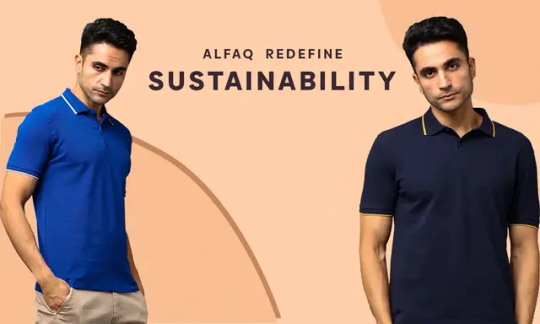
The fashion industry is characterized by rapidly changing trends, but one brand is making strides by integrating style and sustainability. Alfaq, known for its innovative designs, recently launched a collection poised to transform perspectives. This is more than a new clothing line; it represents the future of the fashion industry. Sustainable Style Meets Contemporary Edge Alfaq's latest collection demonstrates sustainable fashion's potential. Each piece in the line, ranging from hoodies to jackets, t-shirts to shorts, and sweatshirts, is produced with strong environmental consideration. However, this isn't typical "green" clothing. Prioritizing Eco-Friendly Materials What sets Alfaq apart is an unwavering focus on eco-friendly materials. Every fabric, thread, and button is selected with sustainability in mind. As a result, the garments not only look appealing but feel good – for both the wearer and the planet. Organic Cotton as the Foundation of Comfort All-cotton clothing is a key component of Alfaq's latest collection. The cotton is grown without any kind of harmful pesticides or chemical fertilizers. The utilization of organic cotton leads to apparel which are softer, more durable, and long-lasting, making them beneficial for both the environment and consumers. Ethical Production Beyond Surface Level Alfaq isn't just jumping on sustainability as a passing trend; they're pioneering ethical fashion. Their commitment goes deeper than materials to include fair labor practices and transparency throughout supply chains. Wearing Alfaq supports not only personal style but also global equity. Recycled Materials as a Source of Innovation Perhaps the most exciting part of Alfaq's new collection is innovative use of recycled materials. By upcycling fabrics that may otherwise become waste, Alfaq is closing the loop on fashion's environmental impact. Empowering Eco-Conscious Choices As consumers grow more aware of their wardrobes' environmental effects, brands like Alfaq's are leading on eco-friendly options. This collection proves sustainability need not come at the cost of style. Each piece achieves balance between form and function, appealing to style-conscious buyers focused on sustainability.
In summary, Alfaq's new collection transcends being merely a product line – it's a model for the future of fashion. By seamlessly integrating sustainable materials, ethical production standards, organic apparel, and upcycled designs. For those seeking eco-conscious options without sacrificing style, Alfaq's collection is a paradigm shift.
0 notes
Text
Une expérimentation
Il était une fois une expérimentation. C’était hallucinant. Il n’avait pas voulu y croire et pourtant, maintenant qu’il avait le résultat sous ses yeux, il était bien obligé d’admettre que les autres avaient eu raison et qu’il aurait eu tort de ne pas les avoir écoutés. Lui était de la vieille école, il avait ses habitudes, ses propres méthodes et techniques qui avaient participé à son succès et, après tant d’années dans le métier, il ne doutait plus de la maîtrise de son art. Têtu et obstiné, au plus il vieillissait, au plus il s’enfermait dans ce qu’il savait faire avec une méfiance souvent indue envers toute forme de nouveauté. Mais il avait quand même bon fond et il ne voulait pas qu’on garde de lui l’image d’un vieux grincheux qui était resté dans son coin pendant que tout le monde allait de l’avant. Alors, il les avait essayés ces drôle de pigments “magiques” dont on n’avait cessé de lui parler. Et il avait été littéralement bluffé. Sa peinture était manifestement tout aussi réussie que s’il avait utilisé ses bons vieux pigments. La couleur était toute aussi vive, la matière s’imprégnait tout aussi bien sur la toile. Il n’arrivait presque pas à y croire. Et pourtant, il venait bien de peindre avec d’anciens vêtements ! Enfin, des anciens vêtements qu’on avait broyés puis réduits en poudre pour pouvoir en extraire les pigments et les utiliser ensuite en peinture… Le fait est qu’on avait su trouver une solution au problème des déchets textiles, qui prenaient de plus en plus de place sur la planète, en leur attribuant un nouvel usage. Décidément, il existait bel et bien dans ce monde des génies qui étaient capables d’inventer des choses incroyables ! Et lui était fier de pouvoir mettre en avant leurs idées avec ses propres talents : la peinture ! Idiot aurait été-t-il de croire que l’art ne pouvait pas évoluer, que le monde ne pouvait pas se réinventer et que tout était mieux avant. Sa peinture imprégn��e de ces pigments insolites pouvait en témoigner : une nouvelle ère commençait qu’il espérait aussi belle que la nouvelle vie de ces vieux vêtements.

#my art#mode#my post#fashion#ethics#illustration#fashion revolution#art#artwork#artists on tumblr#art tag#illust#illustragram#illustrator#tumblr draw#drawing#my draws#my text#my artwork#my writing
3 notes
·
View notes
Text
Timeless elegance of Yves Saint Laurent
Yves Saint Laurent is a name, synonymous with innovation, elegance and timeless style. As one of the most influential fashion designers of the twentieth century, his heritage continues to shape the fashion world today. From new innovative silhouettes to challenging traditional standards, Saint Laurent’s work has gone beyond simple fashion design, leaving an indelible mark on the industry. Let’s…
#Bold Fashion Choices#British Fashion Designers#celebrity fashion#Chic and Stylish Looks#Classic Fashion Styles#Color Blocking Fashion#culture#Fall Fashion Trends#fashion#Fashion Designer History#Fashion Innovators#Fashion Inspiration#Fashion Minimalism#Fashion Revolution#Hollywood Fashion Icons#Iconic Fashion Pieces#instagram#LBD Fashion Icon#LBD Style Tips#Little Black Dress History#Style Tips 2024#Stylish Fall Outfits#sustainability#trends#Trendy Outfit Ideas#Wardrobe Essentials#ysl#Yves Saint Laurent
1 note
·
View note
Text
How AI is Revolutionizing Fashion Design: The Rise of AI-Generated Prints
The fashion industry is embracing artificial intelligence (AI) in creative new ways—especially in textile and print design. AI-generated patterns, colors, and graphics are transforming how designers work, offering endless inspiration while speeding up the design process.


How AI is Used in Fashion Design
🔹 AI-Generated Prints: Tools like MidJourney, DALL·E, and Stable Diffusion can create unique, customizable patterns in seconds—from abstract florals to futuristic geometrics. 🔹 Faster Iterations: Instead of manually sketching, designers input text prompts (e.g., "watercolor leopard print in pastel tones") and refine results instantly. 🔹 Sustainability Boost: AI reduces fabric waste by allowing virtual prototyping before production.
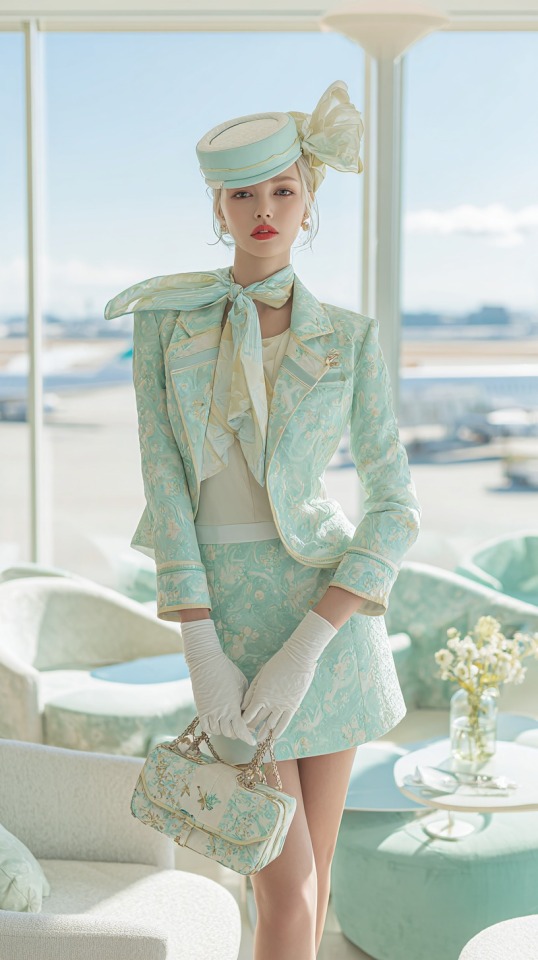

Why Designers Love AI
✅ Unlimited Creativity – AI can mix styles that humans might not think of, like baroque cyberpunk or Art Deco anime. ✅ Cost-Effective – Small brands can access high-end designs without hiring extra illustrators. ✅ Personalization – AI can tweak prints based on customer preferences (e.g., adjusting colors for a capsule collection).
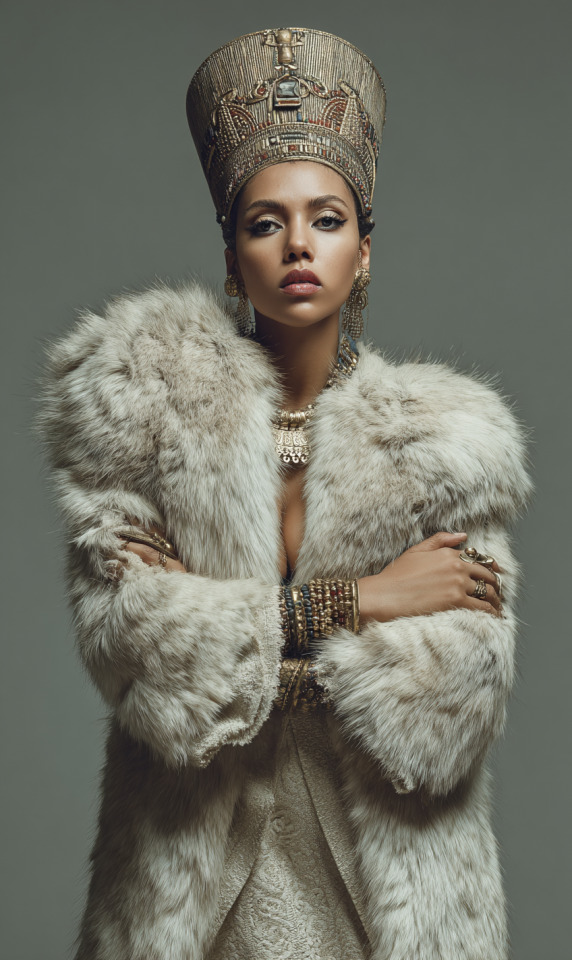
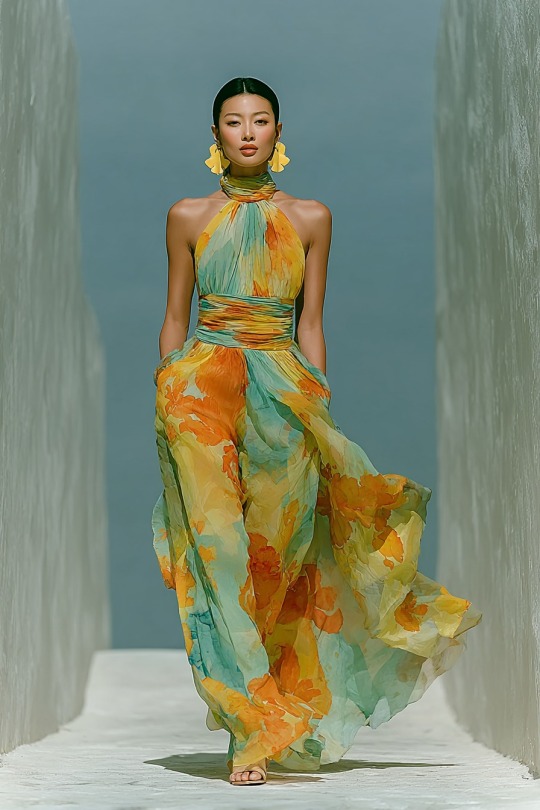
The Future of AI in Fashion
Some fear AI will replace designers, but in reality, it’s a powerful collaborator. Brands like Collina Strada and Balenciaga already experiment with AI-assisted designs, blending human creativity with machine efficiency.
As AI evolves, expect even more hyper-personalized, on-demand fashion—where your next dress’s print could be generated just for you.
#AI Fashion#Future of Design#AI Generated Prints#Sustainable Fashion#Digital Design#Fashion Tech#Textile Innovation#MidJourney#DALL·E#Tech Meets Style#Wearable Art#Fashion Revolution#fashion
1 note
·
View note
Text
imagine like a huge boicot of the fashion industry where brands are no longer allowed to produce gendered clothing, and stores no longer have a separation between the men section and the women section. Children and babies just have smaller sizes of the same clothes. Elements like Elizabethan collars and breeches are brought back into fashion, and everyone can look like a clown, but a stilish clown.✨
more cishet people should crossdress. builds a vibrant ecosystem
#the dream#all hail confusion#fashion chaos#gender#the F in “fashion” stands for “fluidity”#fashion revolution#huhu
26K notes
·
View notes
Text
Unleash your inner diva with our exclusive collection 💎🔥 #BoutiqueVibes #FashionRevolution #StatementPieces
0 notes
Text
1 note
·
View note